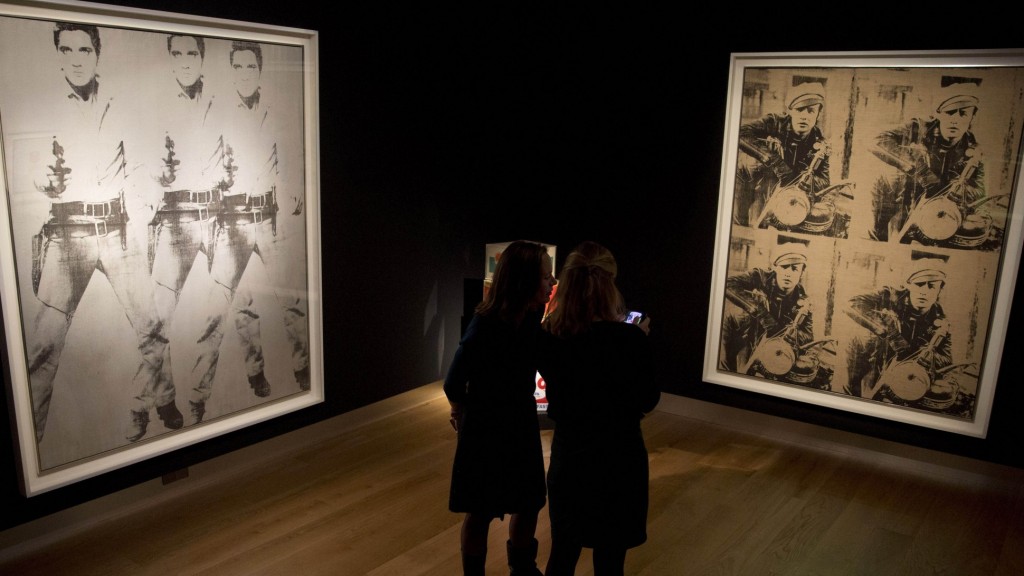Record Contemporary sales of US$ 1.78bn bode well for forthcoming Russian Art Week
Nov 14th, 2014 | By Ivan Lindsay | Category: Journal
The art market juggernaut thundered on last week with Sotheby’s and Christie’s competing with each other in what can only be described as an art feeding frenzy. People may write endless speculation as to the motivation and identity of the buyers of all this modern and contemporary art but the only certainty is that the money is out there, it’s looking for a home and it’s finding it in the art market. Such an open demonstration of confidence in the International Art Market can only help the Russian art collectors who will probably ignore their own worries about the ruble losing 40% of its value this year, and a fragile truce in Ukraine, and turn Russian art week into a success with strong buying.
The following assessment of last weeks sales came from Forbes, Augustino Fontevecchia, 11/13/2014
While Wall Streeters and hedge funders are freaking out about multi-year lows in oil prices and jittery, volatile equity markets, the ultra-wealthy can remain confident in one of their favorite asset classes: art. The art market flexed its muscle over the past week, with Christie’s and Sotheby’s selling more than $1.78 billion in modern and contemporary art at their marquee auctions in New York. While there were some troubling signs, such as low demand for some blue chip pieces including an Alberto Giacometti purchased for $100.97 million—reportedly by billionaire Steve Cohen—, and the extensive use of guarantees, the 1% are still willing to drop a boatload of dollars for high quality works.
It may be premature to speak of a bubble, but the figures are staggering. At $852.9 million, Christie’s set the record for the highest value ever, selling at least 10 pieces for more than $20 million and four going for more than $40 million apiece. Lately, the post-war and contemporary auctions have been setting the records, like last year’s Francis Bacon triptych—which fetched over $140 million—but this time around, it was an expressionist work. Alberto Giacometti’s 1951 bronze “Chariot” went for $101 million.
While the external world may have a hard time justifying the price tag, Giacometti’s sculpture was “fresh,” meaning it was something different, that hasn’t come up for sale too frequently, and that experts consider of high quality. Still, “Chariot,” which sold at Sotheby’s last week, only attracted a single bidder, unmasked as hedgie Steve Cohen. At their biggest auction ever, Sotheby’s raked in $422 million—an impressive sum for an evening sale of impressionist and modern works—but saw 15 lots failing to sell. Works like Edouard Manet’s “Le Printemps,” which went for $65.1 million at Christie’s (which brought in a disappointing $165.6 million from their impressionist sale), Amadeo Modigliani’s “Tete” (sold for $70.7 million), and a still life by Van Gogh which sold for $61.8 million were top-tier pieces, attracting top-tier prices. “It’s been a while since I’ve been excited about impressionist works coming to market,” Citi’s head of art advisory and finance, Suzanne Gyorgy, said before the auction.
The post-war/contemporary market is where the real records are broken these days. As mentioned above, Christie’s didn’t disappoint. On the face of it, Sotheby’s didn’t have a great night, bringing in $343.7 million compared to a high estimate of $418.6 million. Some of the best pieces they had, though, were sold ahead of their headline auction at a separate sale which included “masterkworks” from the estate of the late Bunny Mellon. All 43 pieces sold, bringing in $158.7 million, compared to a high estimate of $121 million.
The action this time was at Christie’s, as it has been for a couple of years, with the record-breaking $852.9 million sale that included a pair of works by Andy Warhol, “Triple Elvis” and “Four Marlons,” which sold for $81.9 million and $69.6 million respectively. A signature piece by Cy Twombly fetched $69.6 million while a Francis Bacon, “Seated Figure,” sold for $45 million.
What does this all mean? That the wealthy, in a world of low interest rates and unstable markets, increasingly choose to park their cash in art. “We’ve seen a trend over the last few years where clients are going into hard assets, from real estate to art, which is a neutral currency,” Gryorgy explained. And, while the talk was about Chinese buyers—and is generally centered on international collectors—“we continue to see U.S. collectors discretely buying at a high level,” according to Gyorgy.
The art market has effectively become “financialized,” turning works into assets that can be traded like equities and commodities. Indeed, collectors and auction houses have increased their use of guarantees, which lock in a minimum price for a work for the seller, while giving a percentage of the upside to a third party (sometimes the auctioneer). In part, guarantees may lead to auctions appearing scripted, lowering demand and therefore prices for some works. “We are also seeing an increase in private sales,” Gyorgy said.
There isn’t an art market bubble, but prices are reaching the stratosphere. Interestingly, the world’s most expensive living artist, Jeff Koons, didn’t see his works set the type of records he’s used to. Yes, a giant “Balloon Monkey (Orange)” sold for $25.9 million. Yet, “Bear and Policeman” saw a single bidder take it for a lower-end price ($8 million), while Damien Hirst-owned “Moon (Yellow), failed to sell. That there are a few disappointing results is probably a healthy thing in a market that continues to go higher.

